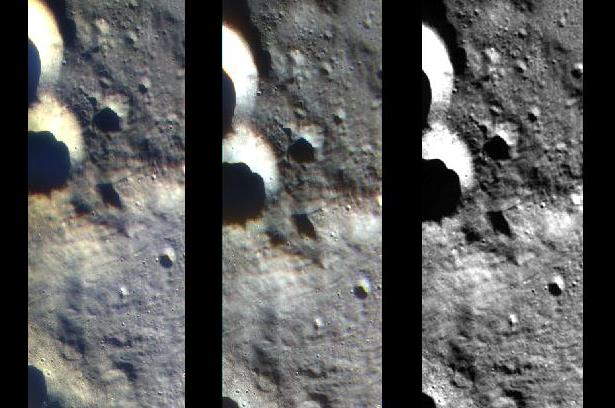[/caption] India's Chandrayaan-1 spacecraft has successfully sent back some of its first science data and images from the moon, but the spacecraft is also experiencing rising temperatures, and mission managers have decided to use the instruments sparingly to avoid overheating. Chandrayaan-1 is currently orbiting over the sunlit side of the moon, and a rise in temperatures inside the spacecraft was expected, but still is a cause for concern. "This rise and fall in temperature inside a satellite is a normal cyclical process," Mylswamy Annadurai, project director of Chandrayaan-I, told a newspaper in India, The Indian Express. "There is nothing unusual about it. But since this is the first cycle being faced by Chandrayaan, we are being extra cautious. We have decided to wait till the temperatures dip to bring the mission into the operational phase." As of now, all but two of the instruments onboard have been switched on and tested. But only one instrument at a time is being used, and the two inactive instruments won't be turned on until engineers know spacecraft is cool enough.
But scientists released a very nice video from the Terrain Mapping Camera…
Here's a link to the movie of images stitched together for a view of flying over the Moon. The videos at ISRO only works in Internet Explorer. Find the science images at ISRO's site here.
During the current orbital phase the spacecraft is almost continually in the sun and experiencing 'summer.' The Moon also radiates heat as it receives energy from the sun. The spacecraft's temperature is expected to stabilize by the end of December. Until then, scientists will use one instrument at a time, but hope to operate all instruments simultaneously by mid-January.
Chandrayaan-1 has a heater, which is capable of increasing the temperature during the 'winter' but there is no cooling mechanism. If temperatures start reaching the upper limit, there would be no option but to switch off all the instruments. [caption id="attachment_21578" align="alignnone" width="509" caption="Image from the TMC of the Moon's polar region. Credit: ISRO"]
[/caption] The two instruments that haven't been turned on yet are not only more sensitive to heat but also to high voltage. One is the Swedish sub-atomic reflecting analyzer (SARA), which will image the Moon's permanently shadowed polar regions. The other is the Indian X-ray spectrometer, HEX, which will study radioactive emissions from the lunar surface.
"We thought it would be wise to wait for the temperature to go down before testing them," Annadurai said. The extra-cautiousness on the part of mission scientists is only because this is Chandrayaan's first experience with such phenomenon. "We are well within the upper limit of the spacecraft's temperature bracket. But we want to remain in this comfort zone as it is our first experience," Annadurai added.
Chandrayaan-1 carries 11 payloads, including a Terrain Mapping Camera (TMC), Hyper Spectral Imager (HySI), Lunar Laser Ranging Instrument (LLRI), High Energy X-ray Spectrometer (HEX), Moon Impact Probe (MIP), Chandrayaan-1 X-ray Spectrometer (C1XS), Smart Near-IR Spectrometer (SIR-2), Radiation Dose Monitor Experiment (RADOM), Sub Kev Atom reflecting Analyser (SARA), Miniature Synthetic Aperture Radar (MiniSAR) and Moon Mineralogy Mapper (M3).
Source:
Indian Express,
ISRO
 Universe Today
Universe Today
